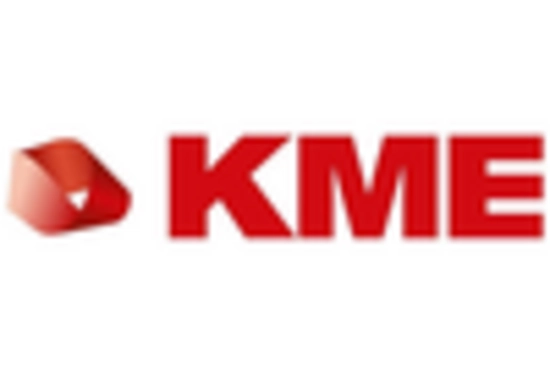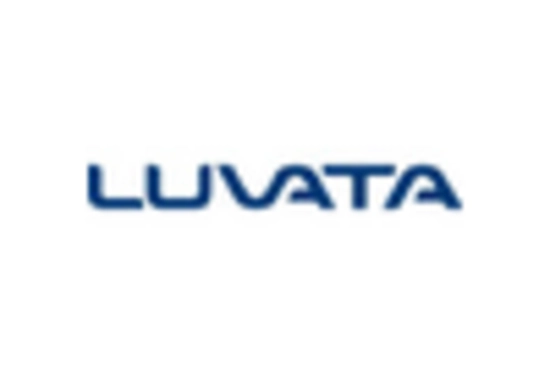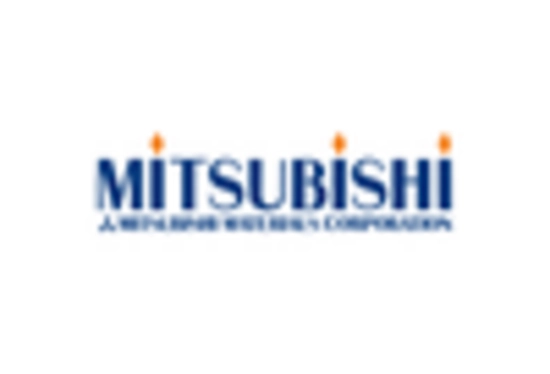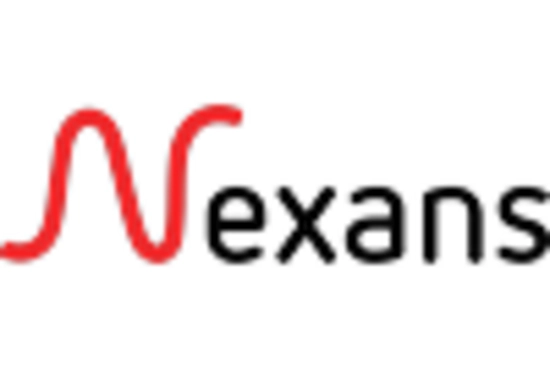The Ultra Low Alpha Metal Market is characterized by a competitive landscape that is increasingly shaped by innovation, sustainability, and strategic partnerships. Key players such as Kurt J. Lesker Company (US), Mitsubishi Materials Corporation (JP), and Ametek, Inc. (US) are actively positioning themselves to leverage these growth drivers. Kurt J. Lesker Company (US) focuses on enhancing its product offerings through advanced manufacturing techniques, while Mitsubishi Materials Corporation (JP) emphasizes sustainability in its operations, aiming to reduce environmental impact. Ametek, Inc. (US) is pursuing digital transformation initiatives to optimize its supply chain and improve operational efficiency. Collectively, these strategies contribute to a dynamic competitive environment where companies are not only vying for market share but also striving to meet evolving customer demands.
The business tactics employed by these companies reflect a nuanced understanding of the market's structure, which appears moderately fragmented. Localizing manufacturing and optimizing supply chains are prevalent strategies that enhance responsiveness to regional demands. This fragmentation allows for a diverse range of offerings, yet the influence of major players remains significant, as they set benchmarks for quality and innovation that smaller firms often strive to meet.
In August 2025, Kurt J. Lesker Company (US) announced the launch of a new line of ultra-low alpha metal products designed specifically for the semiconductor industry. This strategic move is pivotal as it aligns with the growing demand for high-purity materials in semiconductor manufacturing, positioning the company to capture a larger share of this lucrative market segment. The introduction of these products not only enhances their portfolio but also reinforces their commitment to innovation in response to industry needs.
In September 2025, Mitsubishi Materials Corporation (JP) unveiled a partnership with a leading technology firm to develop sustainable production methods for ultra-low alpha metals. This collaboration is strategically important as it underscores the company's dedication to sustainability, potentially setting new industry standards. By integrating advanced technologies into their production processes, Mitsubishi aims to reduce waste and energy consumption, which could enhance their competitive edge in an increasingly eco-conscious market.
In July 2025, Ametek, Inc. (US) expanded its manufacturing capabilities by investing in a state-of-the-art facility dedicated to the production of ultra-low alpha metals. This investment is significant as it not only increases their production capacity but also enhances their ability to meet the growing demand for high-quality materials. The facility is expected to incorporate advanced automation technologies, further streamlining operations and reducing lead times, which is crucial in a market that values efficiency and reliability.
As of October 2025, the competitive trends within the Ultra Low Alpha Metal Market are increasingly defined by digitalization, sustainability, and the integration of artificial intelligence. Strategic alliances are becoming more prevalent, as companies recognize the value of collaboration in driving innovation and enhancing operational capabilities. Looking ahead, it is likely that competitive differentiation will evolve from traditional price-based competition to a focus on technological advancements, sustainable practices, and supply chain reliability. This shift indicates a transformative phase in the market, where companies that prioritize innovation and adaptability may emerge as leaders.


















Leave a Comment